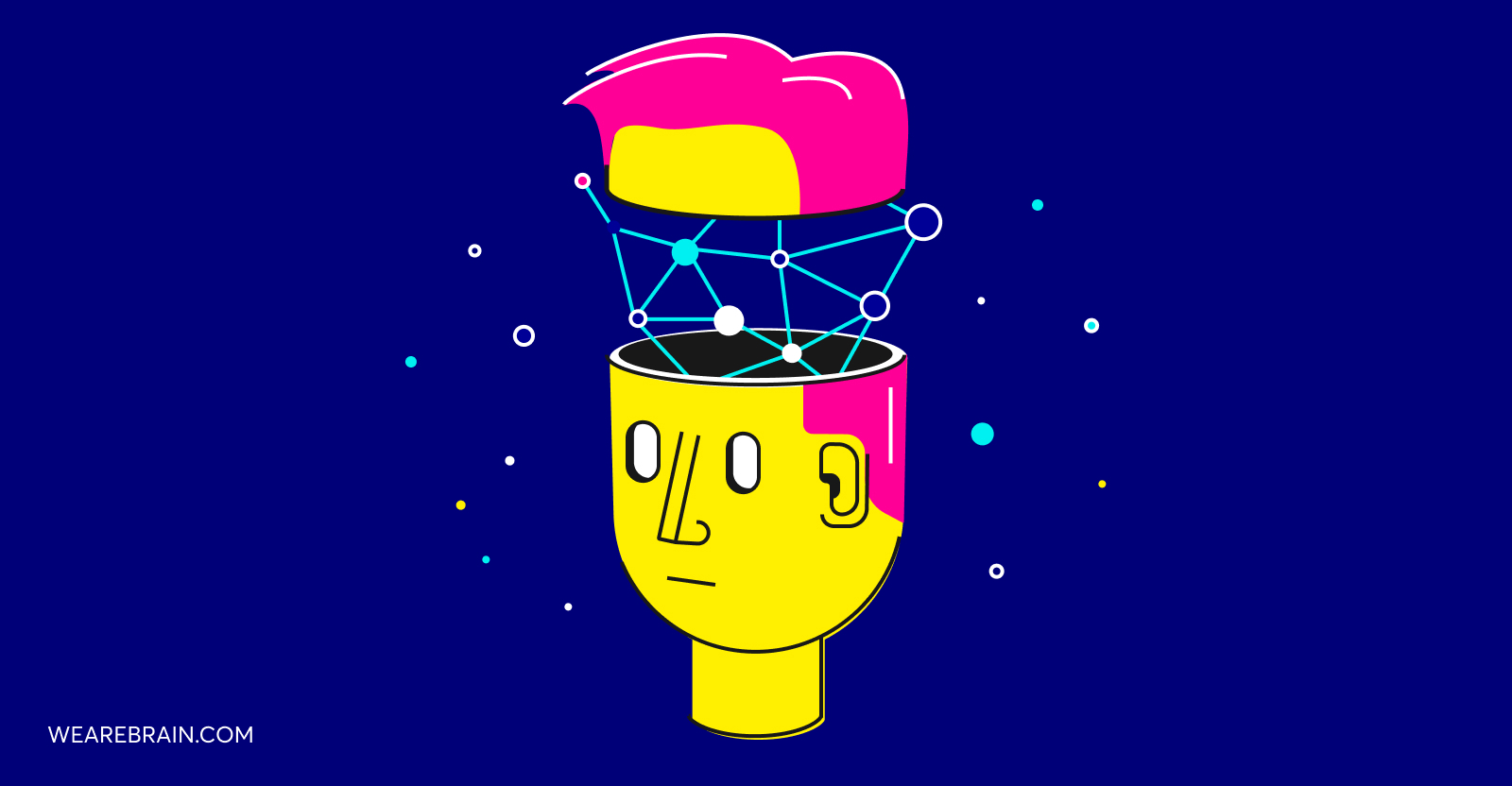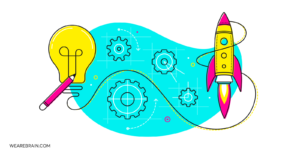Neural Networks 101: An explainer

Humans are able to train computers to think as we do partly through the use of neural networks. These complex systems allow machines to gather, identify and categorise data to make increasingly accurate predictions with each iteration.
“Thinking machines” have become an everyday reality responsible for shaping almost every aspect of our digital society.
But what are the benefits, drawbacks, and real-world applications for machines that can learn as humans do?
What are neural networks?
Neural networks – also known as artificial neural networks (ANNs) – are the powerhouse of deep learning algorithms, a subset of machine learning. As the name implies, neural networks are a series of algorithms that are modelled after the way biological neurons signal to each other in the human brain. They are designed to mimic our brain’s ability to recognise patterns and categorise information – only much faster.
To understand the information it receives and processes, neural networks assign items to categories – much like the human brain. When we learn something new, our brain tries to compare it to similar things to make sense of it. Neural networks function under the same principle.
For example, in the same way we know a salmon is a salmon partly because it is not a tuna (but is still a fish), neural networks try to achieve the same categorisation disciplines based on deterministic principles. Neural networks learn by doing, becoming more accurate with each iteration.
A brief history of neural networks
While it might sound futuristic, the idea of modelling machines on the human brain has been around for a surprising amount of time.
In 1943, neurophysiologist Warren McCulloch and mathematician Walter Pitts developed a simple electrical circuit that compared neurons with binary thresholds to Boolean logic (0/1 or true/false statements). The concept of “threshold logic” was born.
Then, Donald Hebb’s The Organization of Behaviour (1949) proposed that neural pathways get stronger each time they are used – more so when they fire at the same time. This is known as Hebbian Learning, and is often referred to by the phrase “Cells that fire together, wire together”.
In 1958, building upon the work previously done by McCulloch, Pitts, and Hebb, Frank Rosenblatt added weights to the equation and developed the perceptron – a probabilistic model explaining a brain’s complex decision processes within a linear threshold.
In the 60s and early 70s, a lot of research went into concepts of Neural Nets and backpropagation – an intuition-based method that reduces significance to events the further back you go in the chain of events. In 1974, Paul Werbos applied this concept to neural networks. Backpropagation, together with Gradient Descent, forms the backbone of neural networks.
This lead to an acceleration in AI research and resulted in Kunihiko Fukushima developing the world’s first multilayered neural network in 1975.
How do neural networks function?
Neural networks are made up of node layers (or artificial neurons) that contain an input layer, multiple hidden layers, and an output layer. Each node has a weight and threshold and connects to other nodes. A node only becomes activated when its output exceeds its threshold, creating a data transfer to the next network layer.
Let’s use a feedforward network as an example:
When input layers are determined, they are assigned a specific weight that decides the importance of a variable – higher values contribute more to the output. Then, each input is multiplied by its weight and then calculated to find a value. Once this is completed, outputs are passed through an activation function which determines the real output. If the output is higher than a particular threshold, it activates the node to pass data to the next network layer – i.e. one node’s output becomes the next node’s input.
Because multiple layers of data are being processed, a hierarchy of related concepts and decision trees are created. This leads to numerous variations of one input being processed, as to answer one question, neural networks generate multiple leads/variations to source deeper related questions as a result.
Neural networks rely on the amount of data they receive. The data needs to be good, ‘clean’ data in order to make effective predictions and yield better results. The difference between machine learning and deep learning neural networks is that ANNs do not require their parameters to be defined and programmed by a human, the systems learn from exposure to big data – they train themselves.
Types of neural networks
There are different kinds of neural networks that have pros and cons depending on what you use them for. Although there are a lot more, here are the most common types of neural networks:
Convolutional Neural Networks (CNN)
CNNs are comprised of 5 layers: input, convolution, pooling, fully connected, and output. Each layer performs a specific function (connecting, summarising, and activating). CNNs are commonly used for object detection, image categorisation, and natural language processing.
Recurrent Neural Networks (RNN)
RNNs use sequential data – like time-stamped information from an audio sensor – to determine its current input and output. Unlike common neural networks, all RNN inputs and outputs are codependent and rely on previous computations of each other to generate new ones. RNNs are used to solve temporal issues in speech recognition and language translations.
Feedforward Neural Networks (FNN)
In FFNs, each perceptron in a layer is connected to the perceptrons of the next layer. Data is fed from one layer to the next moving forward only, meaning there are no feedback loops. FNNs are thus the opposite of RNNs.
Autoencoder Neural Networks
Autoencoders generate abstractions called ‘encoders’ from a set of inputs which they model themselves, making them unsupervised networks. They are designed to ignore irrelevant data and prioritise data that is most relevant.
Applications and advantages of neural networks
Neural networks are highly beneficial as they are capable of extracting meaning from complicated data and through this, they are able to detect trends and identify patterns often too complex for humans to decipher. They achieve this by learning by example and they do this really, really fast.
Deep learning is therefore highly beneficial if you have a lot of data intended to find specific use cases for, to derive multiple interpretations. It is particularly useful as it solves problems too complex for machine learning capabilities.
Data classification
Neural networks can classify data which is used in multiple applications across many industries, from banking to retail. Facial, image, voice and gesture recognition are the most common forms of classification and are used for a variety of purposes: from autonomous vehicles and voice functionality to cyber security and identity verification.
Data clustering
Neural networks are able to cluster data in large volumes to detect similarities. This is used for search when comparing documents, sounds, or images to similar items. It is also highly useful to detect anomalies and unusual behaviour outside the norm, used by banks to prevent fraud, for example.
Predictive analytics
When fed enough data, neural networks can establish correlations between current and future events to predict outcomes. This is achieved by running regressions between past and future correlations. The more data is received, the more accurate the predictions will become over time. This is useful to predict outcomes and prevent issues from occurring before they do.
From hardware breakdowns across industries such as transport and manufacturing (even data centres) to predicting possible patient health problems from the data gathered from wearables and digital health profiles, predictive analytics help us act rather than react.
Neural network challenges
But this power comes with a cost — computing power and resource cost. In order to get the full benefit of deep learning neural networks, you will need to have incredibly powerful computing machines, and a lot of money to get your hands on them.
This, coupled with a lot of time, as some neural networks take a few days to spew out (albeit impressive and highly complex) interpretations.
The future of neural networks
AI experts are constantly pushing the capabilities of deep learning neural networks to improve the capabilities and use cases. They are doing this by training increasingly larger neural networks with immense amounts of data. The goal is to create more AI breakthroughs using a heavy-handed approach.
Recently, neural networks have been combined with other AI tools and approaches to perform even more complex tasks. Deep Reinforcement Learning plants neural networks in a reinforcement learning framework which maps actions to rewards in order to achieve goals. This is primed to be a breakthrough in mental and physical education spaces and crucial areas of developmental learning.
The future is indeed bright for deep learning neural networks. With more data our digital society produces, the more information this powerful technology is trained on to become increasingly accurate and useful.
Mario Grunitz
Working Machines
An executive’s guide to AI and Intelligent Automation. Working Machines takes a look at how the renewed vigour for the development of Artificial Intelligence and Intelligent Automation technology has begun to change how businesses operate.







